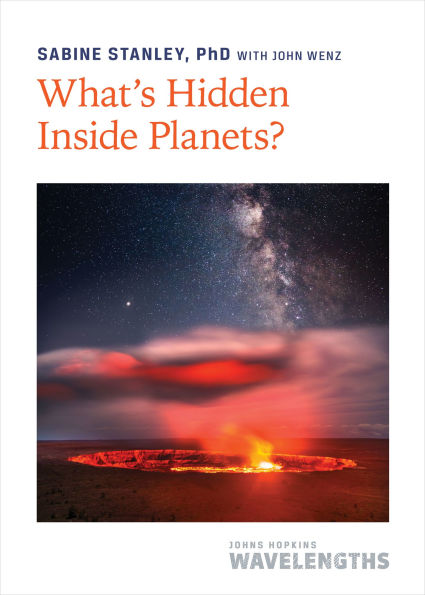Extreme heat. Extreme cold. Extreme pressure. Toxic gases. Scorching magma flows, and ice volcanoes. Interior tides. Asteroids filled with gold. In What's Hidden Inside Planets? planetary scientist Dr. Sabine Stanley cracks the surface to reveal the beating heart of planets and what created them—from the building blocks of swirling cosmic dust, pebbles, and gas to coalesced planetesimal beginnings to the worlds we see today. We're only beginning to explore the secretive interiors of planets, where awe-inspiring wonders await.
Our home planet is no exception. Earth, from space, looks like a shimmering gem suspended in an inky, infinite expanse. But this serene image masks the magnificent and volatile interior forces that make life possible for millions of species on the surface. The placid appearances of our neighboring planets similarly belie their powers—and science fiction-worthy features, like diamond rain. The daily machinations of Earth's deep interior make the planet a habitable, yet sometimes treacherous, place to live. Drill down thousands of miles through our built environments and soil, sand, water, rock, and minerals to the outer (mainly liquid iron with nickel) and inner core, encountering intense convection, roiling metals, hidden continents, and shifting tectonic plates. Discover the effects of magnetism, rotation, and seismic activity seen and sensed in the forms of auroras, hurricanes, volcanoes, and earthquakes, among other manifestations. Our neighboring planets boast their own fierce forces, along with moons covered by frozen oceans that might someday reveal extraterrestrial life.
Join this exciting journey to far-flung interstellar locations and the center of the Earth to learn what lies beneath our feet, and why it's the best real estate in our solar system.
Extreme heat. Extreme cold. Extreme pressure. Toxic gases. Scorching magma flows, and ice volcanoes. Interior tides. Asteroids filled with gold. In What's Hidden Inside Planets? planetary scientist Dr. Sabine Stanley cracks the surface to reveal the beating heart of planets and what created them—from the building blocks of swirling cosmic dust, pebbles, and gas to coalesced planetesimal beginnings to the worlds we see today. We're only beginning to explore the secretive interiors of planets, where awe-inspiring wonders await.
Our home planet is no exception. Earth, from space, looks like a shimmering gem suspended in an inky, infinite expanse. But this serene image masks the magnificent and volatile interior forces that make life possible for millions of species on the surface. The placid appearances of our neighboring planets similarly belie their powers—and science fiction-worthy features, like diamond rain. The daily machinations of Earth's deep interior make the planet a habitable, yet sometimes treacherous, place to live. Drill down thousands of miles through our built environments and soil, sand, water, rock, and minerals to the outer (mainly liquid iron with nickel) and inner core, encountering intense convection, roiling metals, hidden continents, and shifting tectonic plates. Discover the effects of magnetism, rotation, and seismic activity seen and sensed in the forms of auroras, hurricanes, volcanoes, and earthquakes, among other manifestations. Our neighboring planets boast their own fierce forces, along with moons covered by frozen oceans that might someday reveal extraterrestrial life.
Join this exciting journey to far-flung interstellar locations and the center of the Earth to learn what lies beneath our feet, and why it's the best real estate in our solar system.

What's Hidden Inside Planets?
272
What's Hidden Inside Planets?
272
Product Details
| ISBN-13: | 9781421448169 |
|---|---|
| Publisher: | Johns Hopkins University Press |
| Publication date: | 11/14/2023 |
| Series: | Johns Hopkins Wavelengths |
| Pages: | 272 |
| Product dimensions: | 5.00(w) x 7.00(h) x 0.77(d) |
